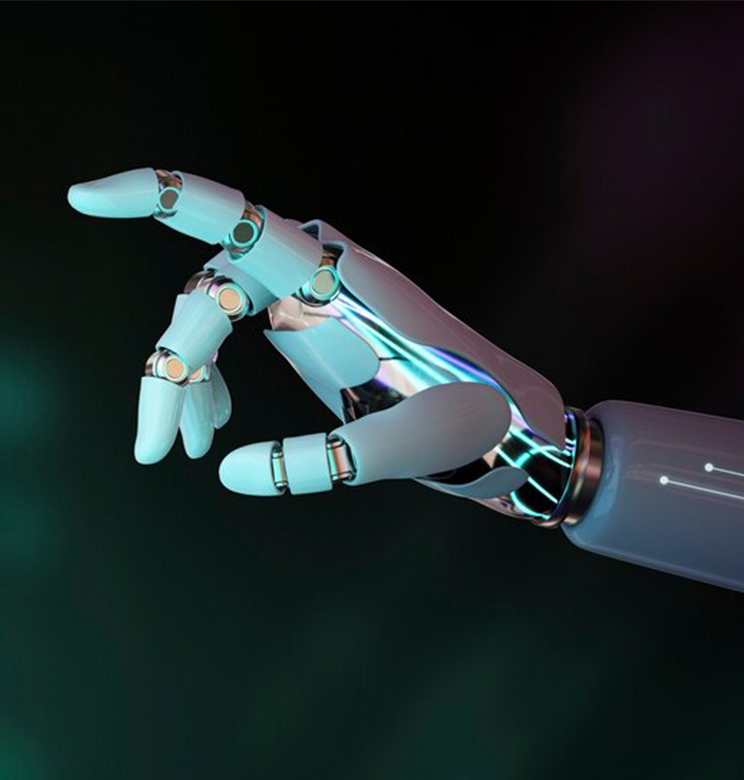- Homepage
- ESDES’s blog
- Research
- Considering climate disasters with Günther Anders
Patrick Gilormini
8 min.
2 May 2023
Deadly floods in Pakistan, historic droughts and heat waves in China and Europe, torrential rains and fires in the United States: from one end of the planet to the other, the natural disasters of the summer of 2022 have made global warming a reality for billions of people. The technical solutions to global warming seem already ill-adapted : in response to the heat wave, California had to partly ban the charging of electric cars, while extending their use[1]. The high temperatures affected the power supply, which was about to collapse. The Lyon metropolitan area was affected by power cuts: the repeated heatwaves caused underground failures, as the electricity network is buried in dense urban areas[2]. Airbus has announced that new hydrogen-powered aircraft will operate in 2035[3] but the use of 'green' hydrogen in aviation will require substantial amounts of sustainable electricity, to the expense of other sectors which must also decarbonize.
How can a high-tech world, which tends to ignore or kill man through technological side effects, leave any room to corporate social and environmental responsibility? The philosopher Günther Anders offers some food for thought that lead us to question the techno-responses to global warming.
On the obsolescence of man
Günther Anders[4] (1902-1992) is a German philosopher and disciple of Husserl and Heidegger who thinks about the self-sufficiency of technology and criticizes it. According to him, modern technology gradually deprives man of his freedom: it starts with declaring man as obsolete, while at the same time harboring the long-term project of annihilating him. It treats man not only as a mere commodity but downright as a raw material. The only freedom left to man, in Anders' view, is that of opposing the technique that stands to steadily sideline him from his role of historical subject in order to replace him. The key word "obsolescence" is connected to the redundancy of industrial production, which is to produce for the sake of producing. If 'progress' moves at an ever-faster pace, it is because the present industry aims to bring its manufactured products to obsolescence as quickly as possible in order to guarantee the continuity of production. So 'if progress still means anything, it is then the progress in manufacturing the outdated. (Anders, 2008, pp. 374-375).
Anders constantly draws our attention to the close relationship between the effects of technology as demonstrated in the genocide of Auschwitz and the likelihood of a future “globicide”, of which Hiroshima and its trivialized repetition in Nagasaki are the harbingers.
Claude Eatherly, commander of the weather plane that assisted the dropping of the atomic bomb on Hiroshima on 6 August 1945, felt no particular resentment towards the Japanese. Eatherly carried out his mission, oblivious of its ultimate purpose. How did it come to this? How was it possible that, as Anders writes, 'the amount of evil required to accomplish the ultimate crime, a disproportionate crime, was zero'? For him, the disasters of the 20th century were merely the logical outcome of a pernicious process, already underway for many years, involving the incremental exclusion of man from all production processes - and, ultimately, from the world created by those processes. The real disaster in this respect, which Anders hoped to make 'visible for the first time', lay in the transformation of the human condition, a transformation that had become as naturalized and unnoticed as it was destructive. In his view, the atomic bomb is "the ultimate emblem of a supernatural, disturbing and haunting force channeled through complex technological objects: it shows that the more 'our' technological power increases, the smaller we become; the more unconditional and unlimited the capacities of machines are, the more conditional our existence is; the more the machines connect us by their very existence, the more we are also seen as redundant and inadequate"
The modern labor model, with its extreme technical division of activities and its logistical and digital chains of abstraction, has made the worker lose sight of the final product and the environmental consequences of his or her actions by reducing his or her function to mere execution and repetitive monitoring. The worker performs standardized work of low intrinsic value - oriented mainly towards the pursuit of profit - in which there is little opportunity for personal expression or the cultivation of a work ethic.
From the Promethean Gap
Technical modernity has become the source of a 'Promethean gap', i.e. of an 'ever-increasing a-synchronicity between man and the world he has produced'. For G. Anders, we are capable of making the hydrogen bomb, but we are unable to imagine the consequences of what we have made. Insofar as technology has invaded all human activities, he invites us to consider that by manufacturing increasingly complex products we have built a world that exceeds our capacity to understand it. In the preface to the fifth edition of the first volume of Obsolescence of Man, he proposes three major theses:
We are no match for the perfection of our products;
What we produce exceeds our capacity of representation and our responsibility;
We believe only what we are allowed to believe, or rather what we must believe (Anders, 2001, p. 11)
The second thesis defines the "Promethean gap": because of the technical gap between the ability to produce and the ability to represent the effects of this production, the properties of the products can qualitatively exceed the attributes of the living being that is man, and, on the other hand, the result is a blindness in practical action that leads to all the difficulties in conceiving an adequate responsibility. Thus, the consequences of the Promethean gap between production and representation manifest themselves on the one hand in a feeling of shame at not being as perfect as one's own productions, and on the other hand in an impossible responsibility, where everyone acts conscientiously, but without being able to measure the consequences of his or her actions. The Promethean discrepancy thus concerns not only the limits of our representation of the effects of technology but also those of morality. Responsibility is a feeling that inhibits our hubris. The monstrous that can be unleashed by the effects of technical systems is such that it becomes unrepresentable, even imperceptible, i.e. difficult to avoid.
Impossibility of social and environmental responsibility
In two open letters addressed to Adolf Eichmann's son twenty-five years apart, Anders considers the human condition from the point of view of a repeated catastrophe, which leads to the ever-increasing obsolescence of the human being himself. Man, still appears to possess a capacity for production that is infinitely superior to his capacity for representation, but also to his capacity to feel. In this context, the very idea of responsibility is radically undermined or deeply perverted. Thus, we are all in one way or another, sons of Eichmann, more precisely we are all faced with choices that G. Anders confronts: the choice of continuity or rupture. This choice is becoming more and more urgent as the margin of play available to humans in a world becoming smaller by the day. Thus, from Thursday 28 July 2022, we will have to start a second planet to cover all the needs of humanity. “Earth Overshoot Day", which moves forward each year in the calendar[5], is a sign that our consumption and production patterns have not yet undergone the necessary transformation. While heatwaves and fires were particularly severe this summer, we continue to consume far more resources than the planet is able to produce each year.
"When face with the need to react to something overwhelming, we are lacking the ability to do so. Whether this excess relates to projects, performances in production or actions that have already been completed, the “oversized” leaves us cold, or better (for coldness would still be a kind of feeling): not even cold, but completely unresponsive; we become 'emotionally illiterate', who, whenever confronted with “oversized texts', no longer recognize that we are simply looking at texts. Six million remains for us a simple number, while the evocation of a dozen killed will perhaps still have some resonance in us, and the murder of a single man fills us with dread. [...] Because it is this deficiency that allows the repetition of the worst things; that facilitates their increase; that perhaps makes this repetition and this increase inevitable. (Anders, 1999, pp. 58-59)
The increasingly close and frequent experience of our helplessness in the face of the impacts of technology on climate change would therefore constitute an opportunity, an opportunity for positive morality, because it can set in motion a mechanism of inhibition. There is indeed, inherent in the shock of our helplessness, a force that warns us. It is precisely this shock that teaches us that we have just reached that ultimate limit beyond which the two paths of responsibility and cynicism separate forever. (Anders, 1999, p. 68).
"For G. Anders, whoever has once really tried to represent the effects of the action he is planning (or of a project in which he has found himself integrated without suspecting anything) and who, after the failure of this attempt at representation, has really admitted this failure to himself, then finds himself gripped by fear, a salutary fear of what he was about to accomplish; in this way, he feels called to re-examine his decision (in this case, what, without having made a decision himself, he would have contributed to triggering). In this perspective, if, for example, while planning to equip your house with a swimming pool, or to take a medium-haul plane, by buying a pair of jeans[6] you cannot imagine the effect of this action, you say to yourself "I cannot imagine the effect of this action, therefore it is a monstrous effect, therefore I cannot assume it, therefore, I must re-examine the planned action or refuse it, or fight it. (Anders, 1999, p. 68)
Bibliography
Anders, G. (1999). Nous, fils d'Eichmann. Paris: Payot & Rivages.
Anders, G. (2001). L'obsolescence de l'Homme. (C. David, Trad.) Paris: Encyclopédie des nuisances : Ivrea.
Anders, G. (2007). La Haine. Paris: Payot & Rivages.
Anders, G. (2008). Hiroshima est partout. Paris: Le Seuil.
Bussy, F. (2020). Günther Anders et nos catastrophes. Paris: Le Passager Clandestin.
Jolly, E. (2017). Günther Anders: Une politique de la technique. Paris: Michalon.
[4] Born in Breslau (which became Wroclaw in 1945), author of anti-fascist texts, he had to go into exile in France and the United States from 1933 to 1950, co-initiator of the movement against the atomic bomb, he went to Hiroshima in 1958, corresponded with Claude Eatherly, the pilot of the Hiroshima reconnaissance plane, and was a member of the Bertrand Russell Tribunal on the war in Vietnam (1966-1967)
[5] 19 September 20 years ago
[6] In 2019, according to the United Nations Alliance for Sustainable Fashion, the production of one pair of jeans consumes 7,500 liters of water, the equivalent of the average person drinking for seven years.










